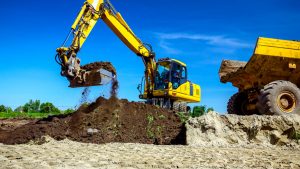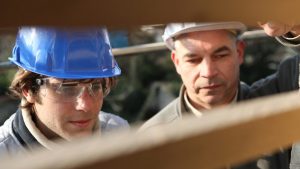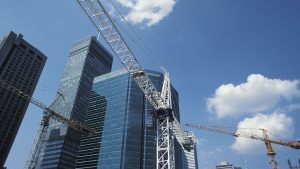Canada’s economy is slowly coming back to life as COVID-19 cases drop to manageable levels.
However, medical experts warn that a second wave of the virus is possible due to recent increases in human interaction. They emphasize the need for continued vigilance to counter any public complacency.
Technology has a role to play in preventing any further spread of COVID-19 on worksites. Entry gateways equipped with thermal cameras can measure body temperatures before workers enter, notifying managers when a reading exceeds 100 F. Wristbands or badges can issue audio or visual alerts when distances between workers become too close, providing both an immediate warning as well as logging individual employee movement for contact tracking purposes. Monitoring can be supplemented with video cameras that provide real-time surveillance.
However, some technology solutions can be intrusive and therefore troublesome.
For example, mobile apps that track employee movements off-site present serious privacy issues. Employers requiring regular COVID testing must know how to handle test results with discretion and be prepared to deal with compliance refusals on medical or religious grounds.
Such issues can place employers in the difficult position of deciding whether or not to allow a worker back onsite.
Yet, virus prevention does not need to rely solely on technology. Sometimes the simplest solutions are the most effective.
For example, ask employees to complete questionnaires concerning their current health and recent travel. In terms of worksite behaviour, stagger shifts to maintain correct distancing and assign workers to specific site areas to minimize chance encounters.
One U.S. company has reportedly appointed “COVID ambassadors” within their work crews to ensure that site protocols are maintained. While not foolproof, these offer a level of confidence and security for fellow workers.
In a study published by the medical journal PLOS titled, Can self-imposed prevention measures mitigate the COVID-19 epidemic? authors Zhang, Tao, Shen, Fairley and Guo discuss how individual prevention strategies can often be the most effective, once workers are properly educated.
“Social distancing and hand washing are effective strategies well accepted by most people.”
Wearing a facemask is a basic precaution anyone can take to reduce the risk of COVID-19 spread in enclosed areas of the jobsite.
“The importance of facemask usage should not be overlooked,” write the study authors, drawing attention to the documented success of facemasks during previous outbreaks of SARS and influenza as well as in clinical settings for COVID-19.
“In addition to the prevention of air transmission of aerosol, facemasks may also block the frequent contacts between hand and nose.”
However, facemasks present a particular problem — many individuals are resistant due to personal discomfort issues on hot summer days, while others simply refuse for reasons of personal conviction.
Getting the required buy-in from workers isn’t always easy, especially with younger ones who feel invincible. Furthermore, supervising any company safety protocols such as facemask usage and correct distancing can be a challenge when sites are widely spread out.
Many mask wearers may simply not be aware of the correct breathing method required.
Saskatchewan-based Somatic Breath Therapy and Behaviour Analyst L. V. Kusch suggests nasal breathing only, not mouth-breathing.
“Mouth breathing dries the airway, restricts alveolar intake and gives you zero protection from any particles you inhale. This triggers the sympathetic nervous system and a whole host of physical responses best known as the flight or fight response,” she explains.
She also suggests that breaths should be light but not shallow and that masks should be dry at all times and changed or washed regularly.
It’s important that supervisory staff set a good example by wearing facemasks themselves and by making masks freely available. Awareness of the health risks and wage losses associated with the possible closing of a site must be messaged continuously.
Whether through technology or employee education and self-discipline, construction companies need to demonstrate concern for the health of their workers by taking actions to prevent the arrival of a second COVID wave.
John Bleasby is a Coldwater, Ont.-based freelance writer. Send comments and Inside Innovation column ideas to editor@dailycommercialnews.com.










Recent Comments
comments for this post are closed